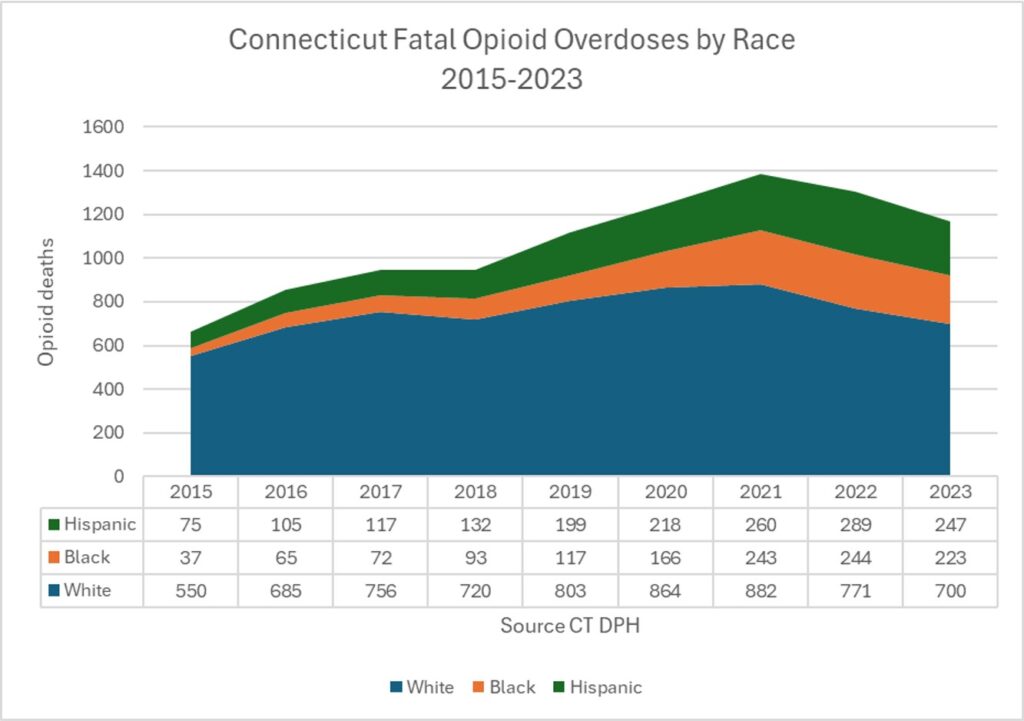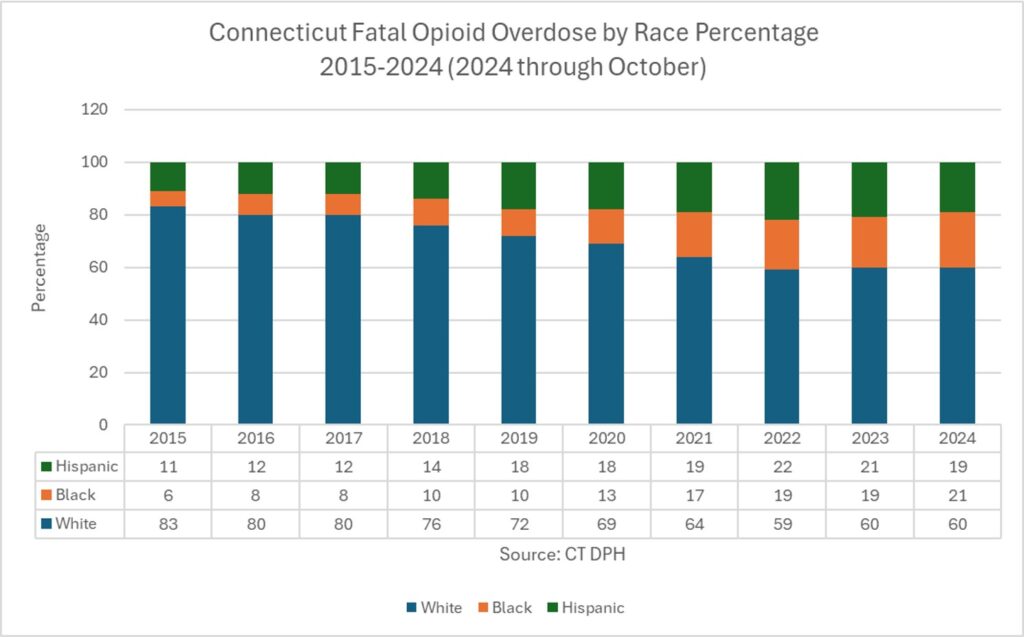I was giving a data presentation to the statewide Harm Reduction Advocacy Group and after reviewing the EMS data I had, I touched on the latest CDC numbers that show a 24.1% decrease in overdoses in Connecticut since November 2021 based on rolling 12-month averages with the latest 12-month period ending June 2024. After the presentation I saw in the chat a comment about white overdoses being down, but minority overdoses still rising. I didn’t have time to address the comment, so I decided I would look into it further.
I was aware that the percentage of overdoses in the minority community was rising. This article below even highlighted Connecticut, which was one of the few states where black deaths showed a small decline.
Overdose deaths are rising among Black and Indigenous Americans
I decided to look at Connecticut death rates in terms of opioid overdoses by race. Here’s what I found:
Connecticut opioid overdoses began declining in 2021. Black and Hispanic opioid overdoses deaths began declining in 2022. Black opioid overdose deaths declined 9.1% in 2023. Hispanic opioid overdose deaths declined 14.5% in 2023. White opioid overdose deaths declined 9.9% in 2023. The percentage of Black opioid overdose deaths in CT has increased every year. In 2024 Black opioid overdose deaths will exceed Hispanic overdoses for the first time. The percentage of White opioid overdose deaths declined every year from 2015 to 2022 when they evened out at 59%/60%.
Here are some graphs I made from data obtained on the Connecticut Department of Public Health interactive overdose dashboard:


The state health department has a graph that uses rates per population which is a more accurate way than what I have done with the above graphs. Their data includes all overdoses and is not specific to opioid overdoses. Here’s what their graph showed. Overdose rates have been declining among all races since 2022.

What does this all mean? Overdose deaths are down. They are still way too high. If there is a population by race that should be targeted, it should be the black community where the rates, while declining, are still significantly higher.
The best investment per dollar: Harm reduction. Connecticut and other states, trying to determine how to spend opioid settlement dollars should set aside a significant portion for harm reduction efforts to reach hard to reach at risk populations.

